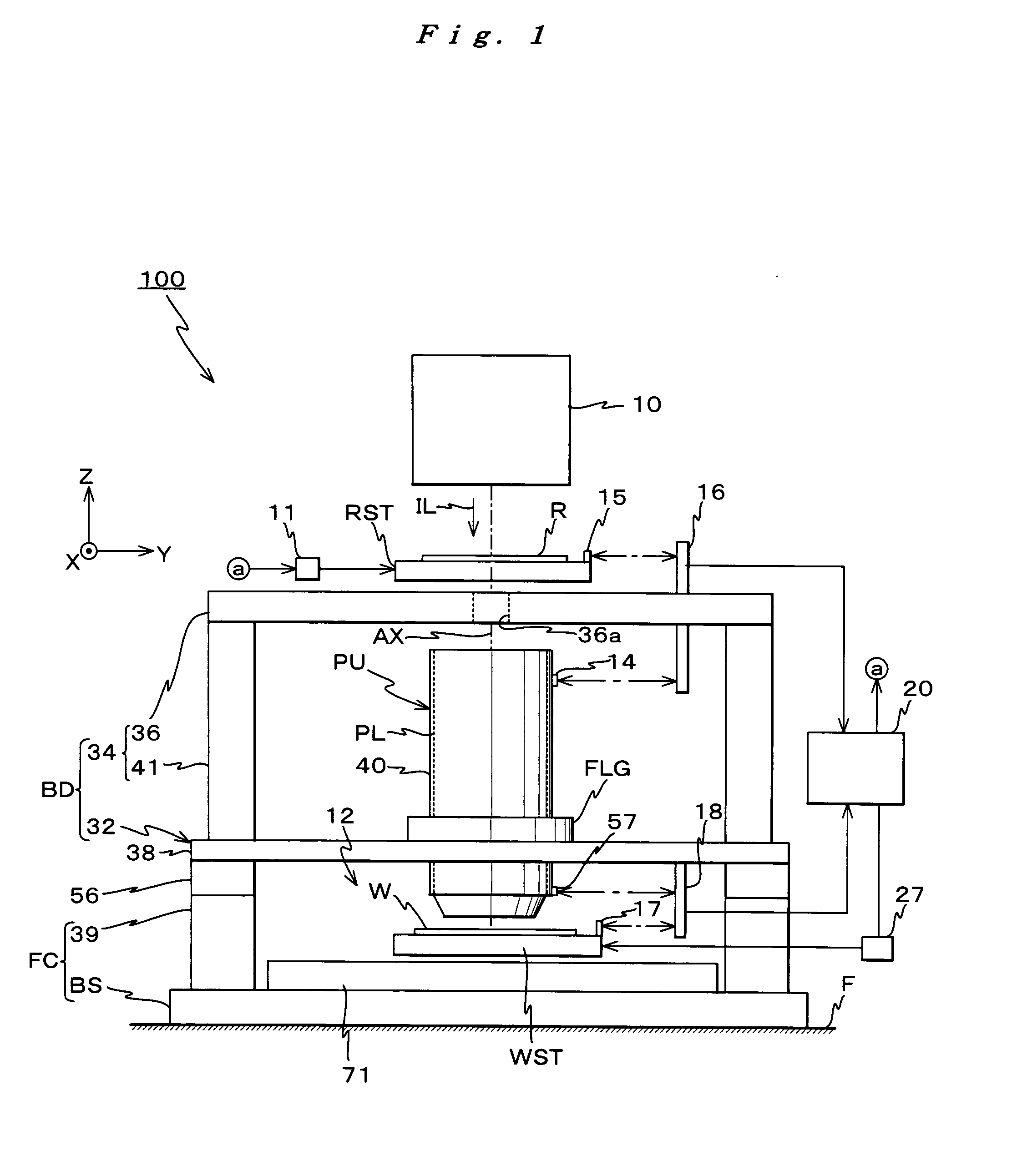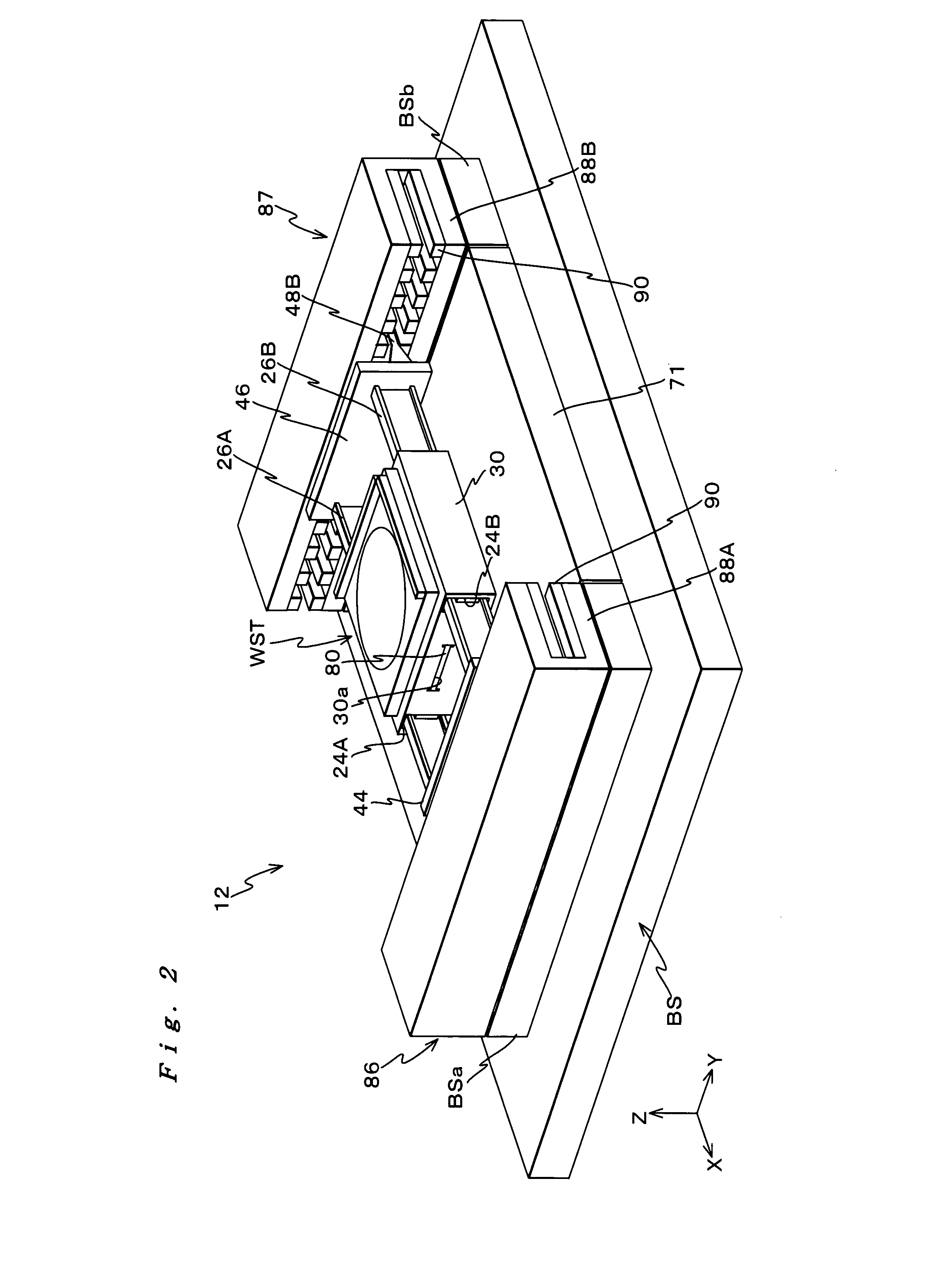Drive Method of Moving Body, Stage Unit, and Exposure Apparatus
a technology of moving bodies and stage units, applied in the direction of process and machine control, printing, instruments, etc., can solve the problems of increasing reducing the exposure accuracy, and reducing the size of the exposure apparatus, so as to prevent an unbalanced load, shorten the stroke distance of the counter mass, and reduce the effect of unbalanced load
- Summary
- Abstract
- Description
- Claims
- Application Information
AI Technical Summary
Benefits of technology
Problems solved by technology
Method used
Image
Examples
Embodiment Construction
[0041]An embodiment of the present invention will be described, referring to FIGS. 1 to 9B.
[0042]FIG. 1 shows the entire configuration of an exposure apparatus 100 related to the embodiment. Exposure apparatus 100 is a scanning exposure apparatus by a step-and-scan method, that is, the so-called scanning stepper. As it will be described later in the embodiment, a projection optical system PL is arranged, and in the description below, an optical axis direction AX of projection optical system PL will be described as the Z-axis direction, a direction within a plane orthogonal to the Z-axis direction in which a reticle R serving as a mask and a wafer W serving as an object are relatively scanned will be described as the Y-axis direction, and a direction orthogonal to both the Z-axis and the Y-axis will be described as the X-axis direction.
[0043]Exposure apparatus 100 is equipped with an illumination system 10 including a light source and an illumination optical system that illuminate re...
PUM
| Property | Measurement | Unit |
|---|---|---|
| wavelength | aaaaa | aaaaa |
| wavelength | aaaaa | aaaaa |
| wavelength | aaaaa | aaaaa |
Abstract
Description
Claims
Application Information
 Login to View More
Login to View More - R&D
- Intellectual Property
- Life Sciences
- Materials
- Tech Scout
- Unparalleled Data Quality
- Higher Quality Content
- 60% Fewer Hallucinations
Browse by: Latest US Patents, China's latest patents, Technical Efficacy Thesaurus, Application Domain, Technology Topic, Popular Technical Reports.
© 2025 PatSnap. All rights reserved.Legal|Privacy policy|Modern Slavery Act Transparency Statement|Sitemap|About US| Contact US: help@patsnap.com



